Table of Contents
The money tree is native to Central and Southern America, distinguished by its braided trunk and natural small body. This tree is popular among Bonsai growers, thanks to its hardiness, speedy growth, and its name associated with good luck and fortune. Money trees can be cultivated successfully both outdoors and indoors, and are easy to grow no matter the level of your Bonsai experience.
| Scientific name | Pachira Aquatica |
| Average height | 20 to 30 feet |
| Average spread | 20 to 30 feet |
| Origin country | Mexico, northern South America |
| Family | Malvaceae |
| Leaf | Evergreen |
| Water | Moderate |
| Sunlight | Full sun |
| Maintenance | Medium |
This money tree bonsai care guide will share some facts about the tree as well as how best to cultivate them.
Can you Bonsai a Money tree?
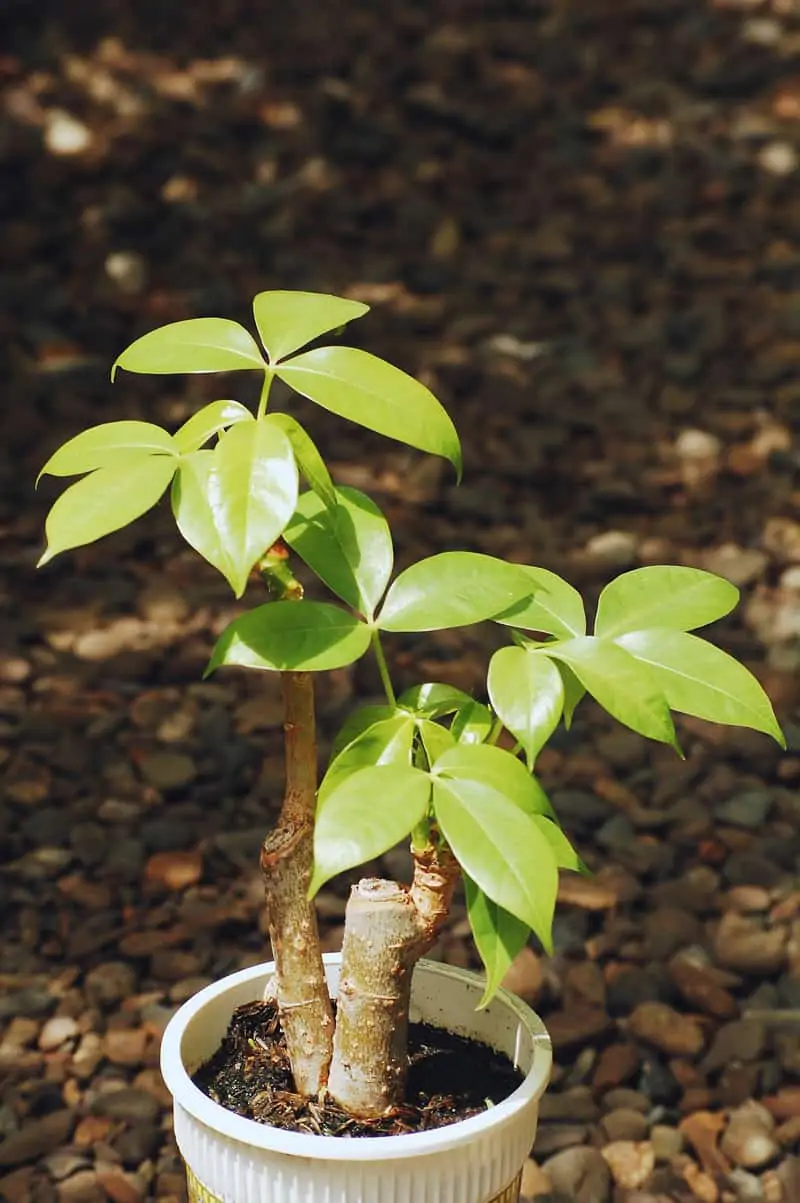
Yes, you can Bonsai a Money tree. However, not all Money tree species that you see on display in local garden stores can be used for Bonsai specimens. But if you happen to get your hands on the right species, with proper pruning enough attention they can grow to become a lovely Bonsai tree.
Money tree Bonsai History
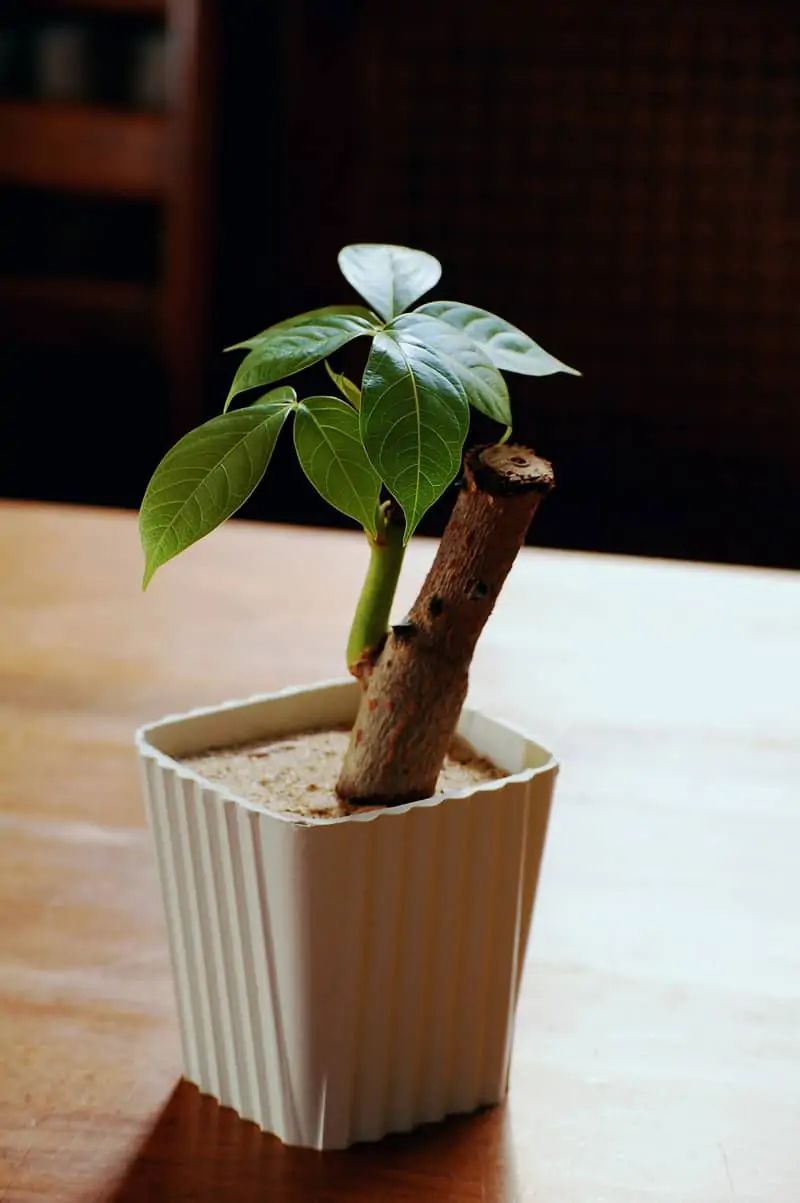
The history of the Money tree can be traced back to many centuries ago when a poor Taiwanese farmer saw a small Pachira tree growing in his garden. The tree looked so attractive to him that he was convinced that the tree could put a stop to his penury, and as a result, he started to grow more of the tree in his garden to sell them. As time goes on, his conviction was realized and he became one of the most affluent people in Taiwan at that time, hence he named the tree, “Money tree” as he believed the Pachira plant was the reason for his wealth.
However, this historical account is said to be flawed as most people believe it’s merely folklore and sounds too good to be true; which led to the discovery of the second version that is widely accepted.
According to the second narration, it was said that the potted Pachira tree became famous in 1980 after a man called Liu styled the stems of the tree to form braids. He started to study the progression of the tree and he realized that he only has to maintain the tree’s braid all through its first stage of growth, then the tree will naturally maintain the braids as it grows. When people saw the style, they fell in love with it and started planting the Pachira tree in the braid pattern, giving rise to its popularity not just in Taiwan, but throughout the world.
Money tree Bonsai Scientific name
The scientific name of the Money tree is Pachita Aquatica
Money tree Bonsai symbolism
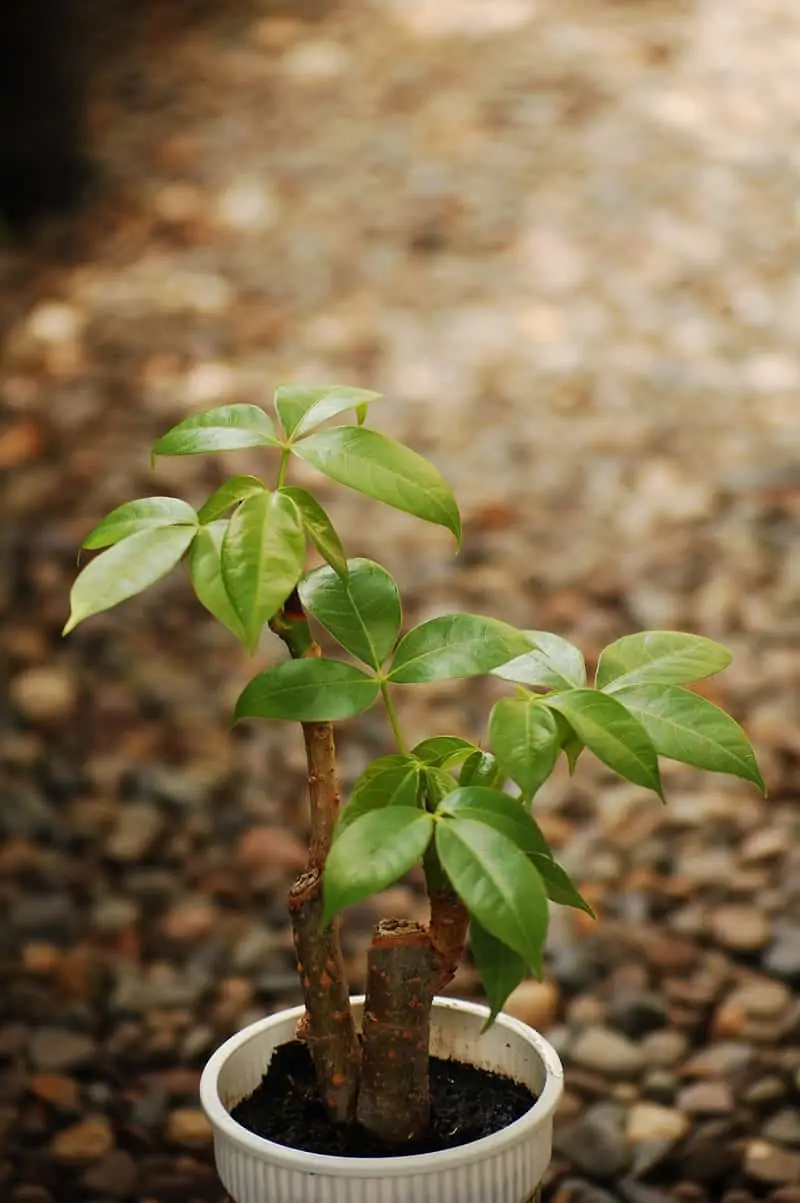
After the story about the man who became rich after discovering the Money tree went viral, the people of Taiwan started to see the tree as a symbol of good fortune and prosperity. They believe that keeping the tree will bring positive changes to the life of the keeper, therefore, they started growing the Money tree in mass and would even give it to each other as gifts.
In the Feng shui culture, the Money tree is believed to have the capacity to trap great fortunes. They believe the 5 leaves on the stems of the tree represent Earth, Wind, Fire, Water, and Metal: the 5 elements of balance. Although finding a Money tree with 7 leaves is scarce, but according to them, keeping one will lead to an abundance of fortune to its keeper.
Money tree Bonsai Benefits
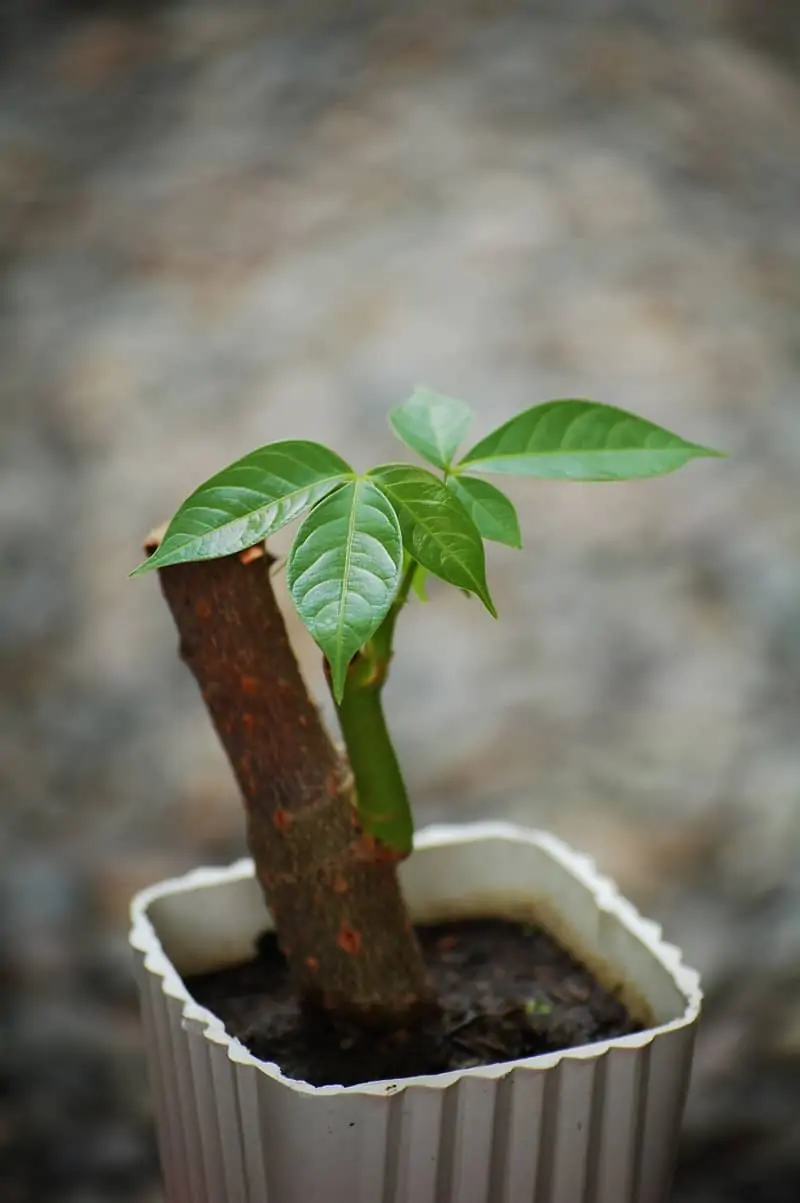
Asides, from bringing fortunes to its owner, the Money tree also offers some other benefits to its owner; check below for other advantages associated with keeping a Money tree.
1. It brings Goodluck and wealth
Of course, the first on the list must be the major benefit the tree is known for wealth creation. Feng Shui experts stated that if a Money tree is placed at the appropriate place, in either your home or office, it will attract good luck and wealth. According to them, if you wish to change your financial status, you should place your Money tree on the Southeast side of your office build or house.
2. Supports clean air
The Money tree is one of the trees considered to be one of the best air purifiers. It absorbs all toxic elements present in the air. Therefore, keeping a Money tree will provide a natural way of securing cleaner ventilation, thereby making creating a safe environment for you and your family to live in.
3. Pets-friendly
Although I said Money tree absorbs toxic substances present in the air, that does not mean they will ingest the substance into their system and become poisonous. The tree is completely safe for all pets. And therefore, they can be kept as an indoor plant without having to worry about the safety of your beloved pets.
4. Aesthetic appearance
The first time I saw the Money tree, I can’t help but remain stunned by the artistic braid in which the trunk was adorned. The appealing appearance of the tree makes them one of the top choices for home interior decors.
5. Natural Bonsai specimen
Money trees grow naturally into the perfect Bonsai size and will require a little trimming to stay in shape. They can be kept indoors and will not outgrow the pot within which they are placed. Plus they require little attention, making them one of the easiest trees to use for Bonsai specimens.
Money tree Bonsai care
Yes, Money trees are easy to grow and require little attention to achieve the desired result, but if the tree is inadequately fed with the needed supplements or is cultivated under less conducive conditions, it will impact negatively the health of the tree. Explained below are the care requirements necessary for the successful cultivation of a Money tree as a Bonsai specimen.
Money tree Bonsai Temperature
Although Money trees can tolerate the extreme cold for some time, it is best to raise them under consistent warm weather. Money trees can tolerate warmth more than they can do for cold; therefore, they must be placed at a room temperature of nothing less than 72°F: away from air conditioners and every other cool place within the house to facilitate healthy growth.
Money tree Bonsai Fertilizer
For your Money Bonsai tree to grow vigorously, you must support its growth with adequate fertilizer. Without fertilizer, your Money is likely to have stunted growth and will exhibit a slow growth rate. Therefore, you must feed the tree with sufficient fertilizers regularly. Money tree responds better to liquid fertilizers; which is to be applied at least once a week. The application should begin during spring and must continue till mid-fall.
However, you must be careful about fertilizer application during these two seasons as they require different nutrients at these periods. For instance, just like most other trees, Money trees require Nitrogen to grow, and therefore they must be fed with fertilizers with high Nitrogen content during spring (growing season). Likewise, during fall (dormant period) they should be fed with fertilizers with more balanced nutrients. This will encourage the growth of healthy roots.
Money tree Bonsai pruning and trimming
The best time to prune your Money tree is during late winter to take advantage of its dormancy before it starts to produce new growth during spring. Money trees usually don’t grow dense leaves, most growers will only prune just for maintenance purposes as heavy pruning is seldomly required.
If this is your intention as well, also all you have to do is cut back 1 or 2 sets of leaves, and you are done. Don’t worry, every lost leaf will be replenished back during the next growing season.
Money tree Bonsai repotting
It is best to repot your Money tree Bonsai in early spring before the development of new buds. And it should be done once or twice in 3 years.
How do you repot Money tree Bonsai?
Repotting a Money tree is one of the easiest, check below for the simple steps involved.
- Prune the roots (careful not to cut back more than 1/4 of the roots).
- Transplant the tree into a container with a well-draining soil mix that contains a certain amount of humus.
Money tree Bonsai pests and diseases
Money trees are very strong plants and are rarely affected by pests and disease.
However, if raised under certain conditions, they can become vulnerable. For instance, if they are raised in an environment with dry air, they will become vulnerable to insects like Spider mites and mealybugs. Luckily, this situation can be easily corrected by placing them in another spot with high humidity and by applying specific pesticides.
If you want to learn how to get rid of spider mites on bonsai, please read our previous guide.
Money tree Bonsai soil
The first thing that should be on your mind when looking for the best soil for a Money tree is soil with well-draining properties that will tolerate the excessive need for water of your plant. Therefore it is advisable to use sandy, peat-based soil for your Money tree. This is to ensure that the soil can drain enough moisture so that it does not become soggy.
Money tree Bonsai watering
For most Bonsai trees, it will be risky to allow their soil to dry out before you apply water, but in the case of the Money tree, it is completely different. Before you water a Money tree Bonsai, make sure the soil dries out before you start to water the plant thoroughly.
If you overwater the plant and you end up creating waterlogged soil, it will affect the delicate root system of the tree and may cause your tree to die if an appropriate step is not taken.
How to water Money tree Bonsai
To endure that your Money tree is adequately watered, all you have to do is moisten the soil of your plant with enough water. This should be done at least once in 7 to 10 days. On a similar note, you should sprinkle water on the leaves of your tree regularly as well. Doing so will impact positively on their growth.
Money tree Bonsai Sunlight requirements
Your Money tree should be placed in a spot where it will have access to enough sunlight: preferably, it should be placed in a window facing south. Money tree does not require extreme warmth to grow, they only require a temperature level of at least 54°F; anything below that will affect your tree.
During summer, you can bring your Money tree outdoors for some sunlight, but when the temperature drops you should bring them inside.
Money tree Bonsai types
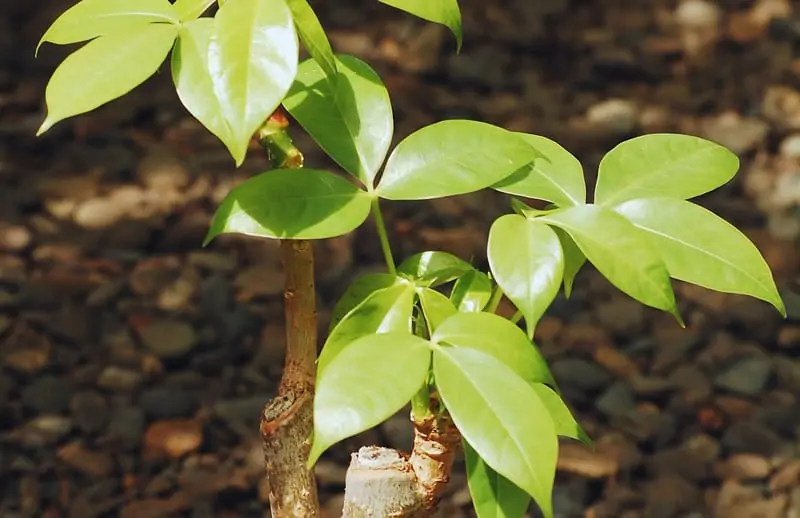
We have several tree species that are commonly referred to as Money trees. These trees are believed to have changed the lives of their owners at one point in time. Some Money tree species include; Pichira acquatica, Jade plant (Crassula ovata), Pothos (Epipremnum aureum), Pennywort (Hydrocotyle Vulgaris), Chinese Money plant (Pilea peperomioides) Lucky Bamboo (Dracaena sanderiana), and Lunaria (Lunaria annua). Below is a brief description of each of the various types of Money tree
Chinese Money tree Bonsai
The Chinese Money tree is also known as the Missionary plant or Bender plant makes an excellent houseplant that can be used to beautify the interior of your house.
The Chinese tree has a scientific name; Pilea peperomioides. The tree is a fast-growing plant, easy to grow, and is best planted in well-drained soil. It is quite hardy and raising them under cool temperature, will encourage flowering, albeit a small amount.
Jade Money Crassula ovata tree Bonsai
The Jade plant, also often commonly referred to as the Money or Dollar plant is native to South Africa. It is a succulent houseplant characterized by its glossy, thick, Jade-green egged-shaped leaves. The Jade tree is pretty popular for its longevity as the tree can live for 100 years or more.
Jade tree is naturally not flowery plant, but as they near maturity, they may start to flower mostly towards winter ending and in early spring if watering is reduced. Jade plants are natural air purifiers but are considered toxic to pets.
Pothos (Epipremnum aureum) Bonsai trees
The Pothos is also known as the Devil`s ivy or Taro vine is a fast-growing houseplant and famous for its almost indestructible nature. The tree is one of the easiest to raise but is considered to be toxic to pets and humans when ingested.
There are many species of the tree and each of the variants has a unique appearance they can be distinctively identified with. The most popular of the tree species is the Golden pothos, known for its heart-shaped green leaves.
Pennywort (Hydrocotyle Vulgaris) Bonsai tree
The pennywort knew as the Copper Coin plant or the Water navel is a good growing perennial plant with diverse origins, Wetlands, Caucasus, and marshes of Europe.
The tree smells like carrot and edible. It can be cultivated both indoors and outdoors, shady tolerant, and will survive under any light condition.
Lucky Bamboo (Dracaena sanderiana) Bonsai tree
In western culture, the Lucky Bamboo is considered to be the most famous of all the Feng shui plants. Although it is not seen as a Money tree, it is sure believed to be a dyno of good luck, happiness, prosperity, fortune, and power: everything that comes with making money.
Can I Bonsai Money tree indoors?
Yes, you can Bonsai money tree indoors. Money tree Bonsai can be grown indoors and outdoors, therefore, you can choose to keep them whichever ways as long as you place them where they will receive enough sunlight.
Money tree Bonsai growth rate
Money trees add up to 24 inches per year! Hence, they are considered to be fast-growing plants.
How to Bonsai a Money tree
You can Bonsai a money tree using either a seed or tree cuttings. To make your job easier, make the cuttings from the tips of a semi-hardwood. The tree will root even if you place it in a glass of water.
Are Money tree Bonsai toxic to dogs?
Money tree (Pachira Aquatica) is safe for both pets (cats and dogs) and humans. It is one of the trees mostly recommended for people who suffer from asthma or allergies.
![Pittosporum Bonsai [Pittosporum Tobira]](https://www.bonsai-express.com/wp-content/uploads/2022/05/Pittosporum-Bonsai-365x200.jpg)
![Sorbus Bonsai [Sorbus Aucuparia]](https://www.bonsai-express.com/wp-content/uploads/2022/05/Sorbus-Bonsai-365x200.jpg)
![Tsuga Bonsai [Tsuga Canadensis]](https://www.bonsai-express.com/wp-content/uploads/2022/05/Tsuga-Bonsai-365x200.jpg)
![Tamarix Bonsai [Tamarix Ramosissima]](https://www.bonsai-express.com/wp-content/uploads/2022/05/Tamarix-Bonsai-365x200.jpg)